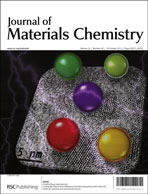Carbonization of solvent and capping agent based enhancement in the stabilization of cobalt nanoparticles and their magnetic study†
Abstract
We describe a hybrid synthetic protocol, the solvated metal atom dispersion (SMAD) method, for the synthesis and stabilization of monodisperse amorphous cobalt


 Please wait while we load your content...
Please wait while we load your content...